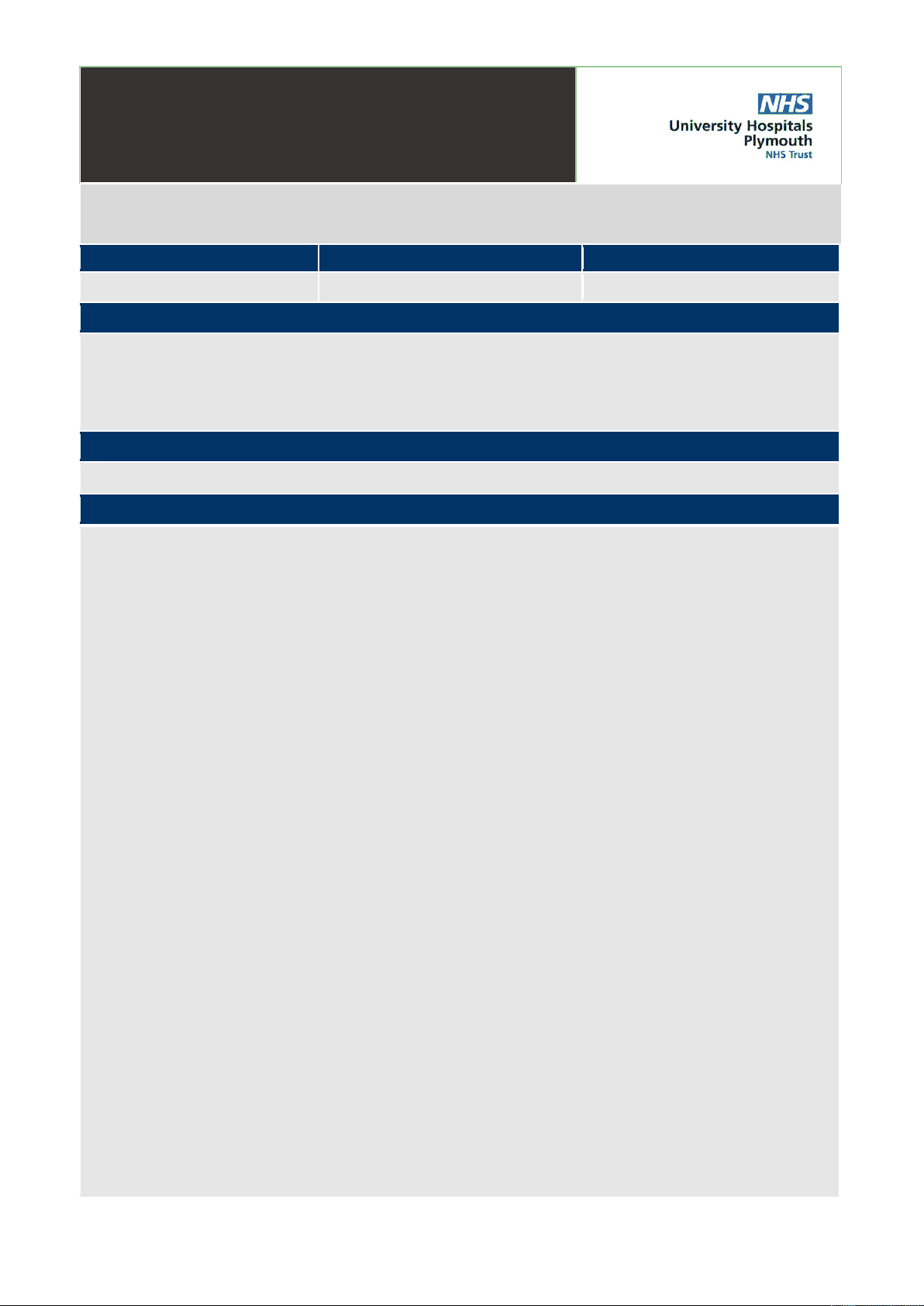
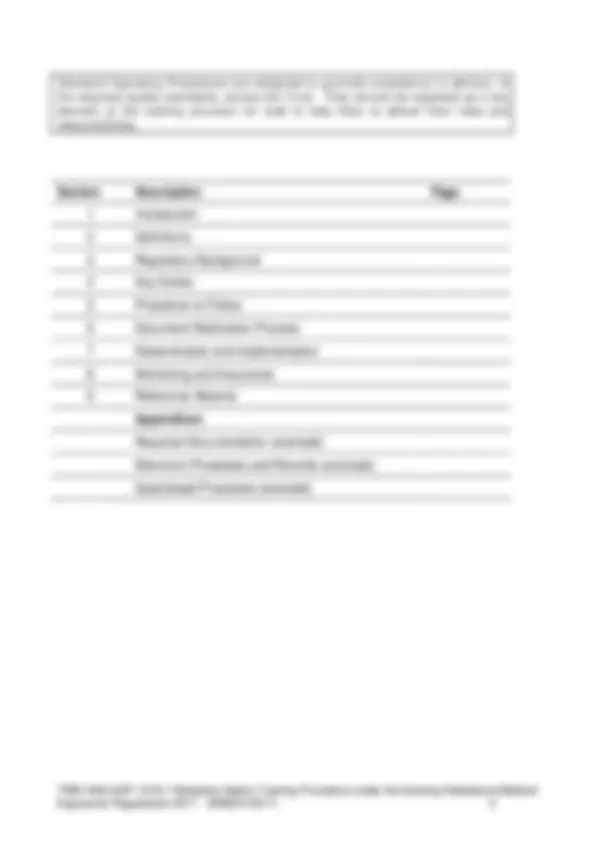
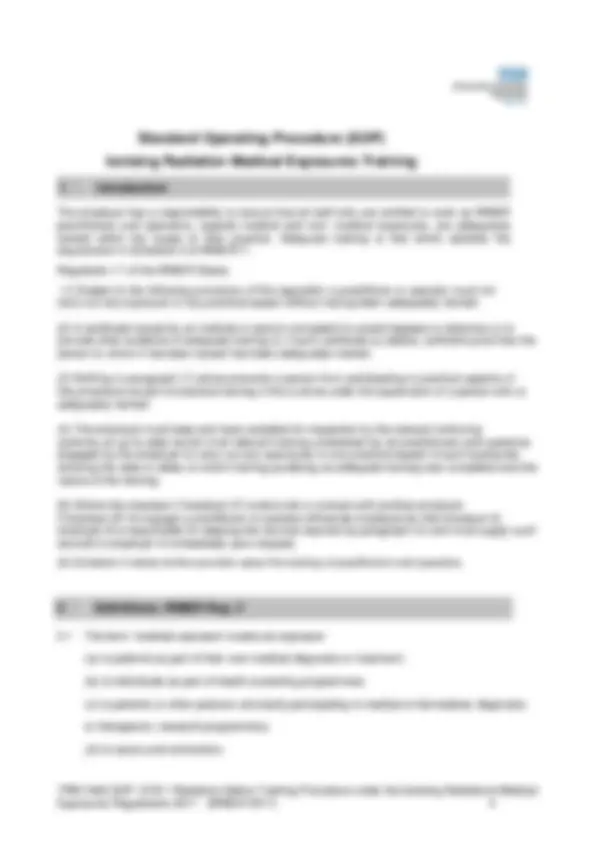
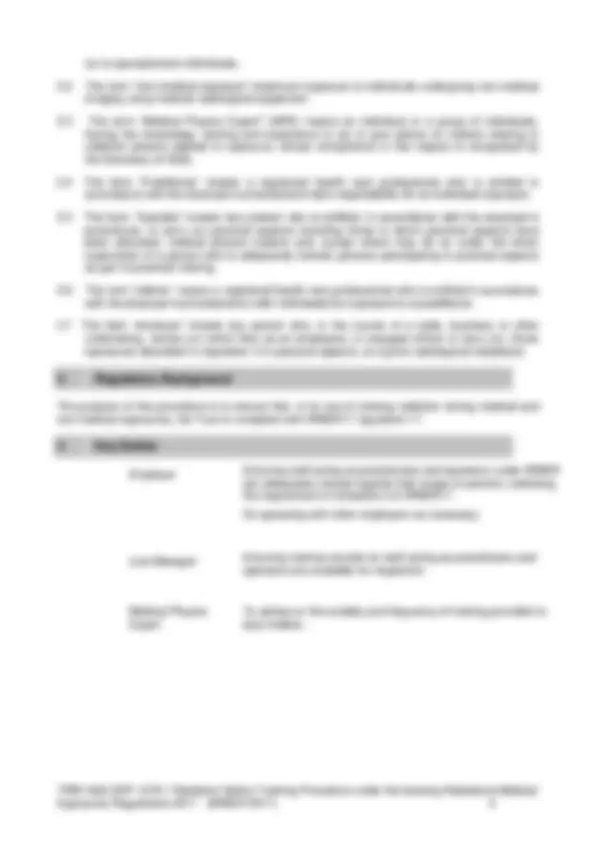
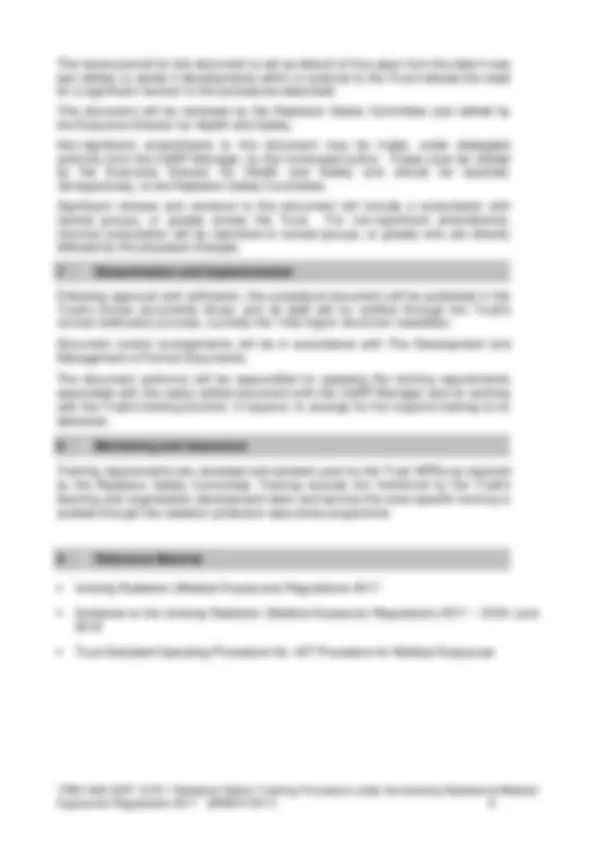
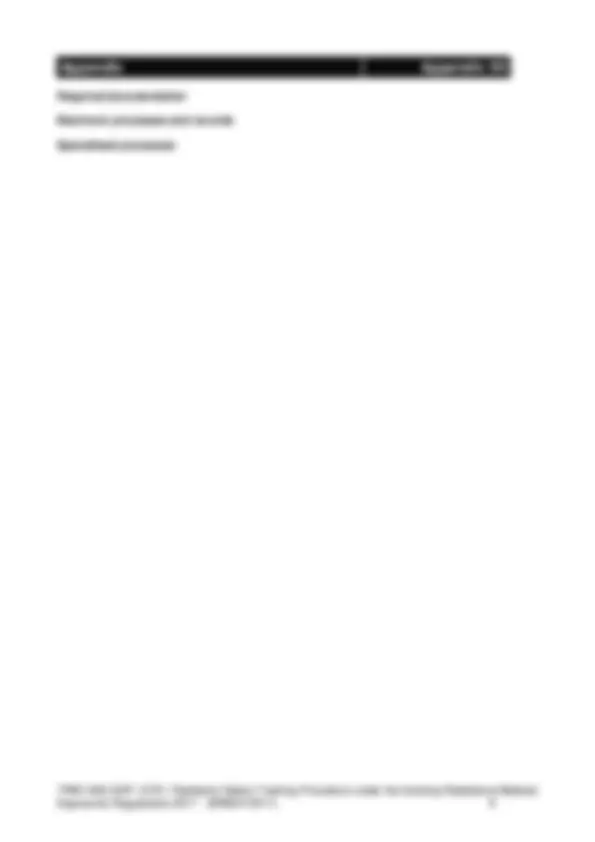


Study with the several resources on Docsity

Earn points by helping other students or get them with a premium plan


Prepare for your exams
Study with the several resources on Docsity

Earn points to download
Earn points by helping other students or get them with a premium plan
Community
Ask the community for help and clear up your study doubts
Discover the best universities in your country according to Docsity users
Free resources
Download our free guides on studying techniques, anxiety management strategies, and thesis advice from Docsity tutors
The mandatory radiation safety training procedure for duty holders under the Ionising Radiations Medical Exposures Regulations 2017 (IRMER 2017). It covers core accountabilities, definitions, training requirements, and procedures for practitioners, operators, and referrers. The Trust is committed to ensuring all staff are adequately trained and records are kept for inspection.
What you will learn
Typology: Lecture notes
1 / 9

This page cannot be seen from the preview
Don't miss anything!






TRW.H&S.SOP.1278.1 Radiation Safety Training Procedure under the Ionising Radiations Medical
Issue Date Review Date Version May 2020 May 20 25 1
Purpose
Who should read this document?
Employer, Line Manager(s), Service Lines; Duty Holders
Key Messages
TRW.H&S.SOP.1278.1 Radiation Safety Training Procedure under the Ionising Radiations Medical
Core accountabilities
Owner Clinical and Radiation Physics
Review (^) Radiation Safety Committee
Ratification (^) Director of Healthcare Science & Technology (Peter Wright)
Dissemination (Raising Awareness)
Radiation Safety Committee
Compliance (^) Radiation Safety Committee
Links to other policies and procedures
IRMER Written Procedures for Oncology IRMER Written Procedures for Imaging IRMER Written Procedures for Cardiology IRMER Written Procedures for Nuclear Medicine IRMER Written Procedures for Surgery IRMER Written Procedures for Breast Services IRMER Written Procedures for Bone Densitometry
Version History
1 May 2020 Final Version
The Trust is committed to creating a fully inclusive and accessible service. Making equality and diversity an integral part of the business will enable us to enhance the services we deliver and better meet the needs of patients and staff. We will treat people with dignity and respect, promote equality and diversity and eliminate all forms of discrimination, regardless of (but not limited to) age, disability, gender reassignment, race, religion or belief, sex, sexual orientation, marriage/civil partnership and pregnancy/maternity.
TRW.H&S.SOP.1278.1 Radiation Safety Training Procedure under the Ionising Radiations Medical
The employer has a responsibility to ensure that all staff who are entitled to work as IRMER practitioners and operators, regards medical and non- medical exposures, are adequately trained within the scope of their practice. Adequate training is that which satisfies the requirement in Schedule 3 of IRMER17.
Regulation 17 of the IRMER States:
(1) Subject to the following provisions of this regulation a practitioner or operator must not carry out any exposure or any practical aspect without having been adequately trained.
(2) A certificate issued by an institute or person competent to award degrees or diplomas or to provide other evidence of adequate training is, if such certificate so attests, sufficient proof that the person to whom it has been issued has been adequately trained.
(3) Nothing in paragraph (1) above prevents a person from participating in practical aspects of the procedure as part of practical training if this is done under the supervision of a person who is adequately trained.
(4) The employer must keep and have available for inspection by the relevant enforcing authority an up-to-date record of all relevant training undertaken by all practitioners and operators engaged by the employer to carry out any exposures or any practical aspect of such exposures showing the date or dates on which training qualifying as adequate training was completed and the nature of the training.
(5) Where the employer (“employer A”) enters into a contract with another employer (“employer B”) to engage a practitioner or operator otherwise employed by that employer B, employer B is responsible for keeping the records required by paragraph (4) and must supply such records to employer A immediately upon request.
(6) Schedule 3 makes further provision about the training of practitioners and operators.
2.1 The term “medical exposure’ means an exposure:
(a) to patients as part of their own medical diagnosis or treatment;
(b) to individuals as part of health screening programmes;
(c) to patients or other persons voluntarily participating in medical or biomedical, diagnostic
or therapeutic, research programmes;
(d) to carers and comforters;
TRW.H&S.SOP.1278.1 Radiation Safety Training Procedure under the Ionising Radiations Medical
(e) to asymptomatic individuals;
2.2 The term “non-medical exposure” means an exposure to individuals undergoing non-medical imaging using medical radiological equipment.
2.3 The term “Medical Physics Expert” (MPE) means an individual or a group of individuals, having the knowledge, training and experience to act or give advice on matters relating to radiation physics applied to exposure, whose competence in this respect is recognised by the Secretary of State.
2.4 The term ‘Practitioner’ means a registered health care professional who is entitled in accordance with the employer’s procedures to take responsibility for an individual exposure;
2.5 The term ‘Operator’ means ‘ any person who is entitled, in accordance with the employer’s procedures, to carry out practical aspects including those to whom practical aspects have been allocated, medical physics experts and, except where they do so under the direct supervision of a person who is adequately trained, persons participating in practical aspects as part of practical training.
2.6 The term ‘referrer’ means a registered health care professional who is entitled in accordance with the employer’s procedures to refer individuals for exposure to a practitioner.
2.7 The term ‘employer’ means any person who, in the course of a trade, business or other undertaking, carries out (other than as an employee), or engages others to carry out, those exposures described in regulation 3 or practical aspects, at a given radiological installation.
The purpose of this procedure is to ensure that, in its use of ionising radiation during medical and non-medical exposures, the Trust is compliant with IRMER17 regulation 17.
Employer Ensuring staff^ acting as practitioners and operators under IRMER are adequately trained regards their scope of practice, satisfying the requirement in Schedule 3 of IRMER17. Co-operating with other employers as necessary.
Line Manager Ensuring training records for^ staff acting as practitioners and operators are available for inspection:
Medical Physics Expert
To advise on the suitably and frequency of training provided to duty holders.
TRW.H&S.SOP.1278.1 Radiation Safety Training Procedure under the Ionising Radiations Medical
Students are supervised at all times during their placement by qualified and appropriately trained staff. They will complete an induction package relevant to the modality.
Agency:
Agency staff should receive the same standard of training relevant to staff undertaking the same or similar role. The responsibility for the training records remains with the agency employer.
Volunteers:
Volunteer staff should receive the same standard of training relevant to staff undertaking the same or similar role. The responsibility for the training records remains with the employer.
Specialist Roles - Medical Physics Experts:
MPEs appointed by the Trust are required to maintain sufficient CPD to maintain their MPE certification as recognised by Secretary of State – currently portfolio review under RPA2000.
Training Intervals
Training Review
Training content should be reviewed periodically, 3 yearly is deemed sufficient, or where there are changes in working arrangements.
The Trust induction training, both face to face and eLearning packages should be reviewed by the Radiation Safety Experts Forum (RSEF) and any changes ratified by the Radiation Safety Committee.
Keeping and Maintaining Records
Records of Professional Registration will be maintained by the Trust Learning and Organisational Development Department.
Records of training delivered through Trust mandatory training programmes should be recorded kept and maintained by the Trust Learning and Organisational Development Department. E.g. IRMER for Referrers
Theoretical, equipment, documental and department continued professional development training delivered within service lines should be kept and maintained by the relevant service line. This should be done such that requirements for refresher training can be identified and to aid management and the radiation safety assurance programme in identifying compliance with staff training requirements
TRW.H&S.SOP.1278.1 Radiation Safety Training Procedure under the Ionising Radiations Medical